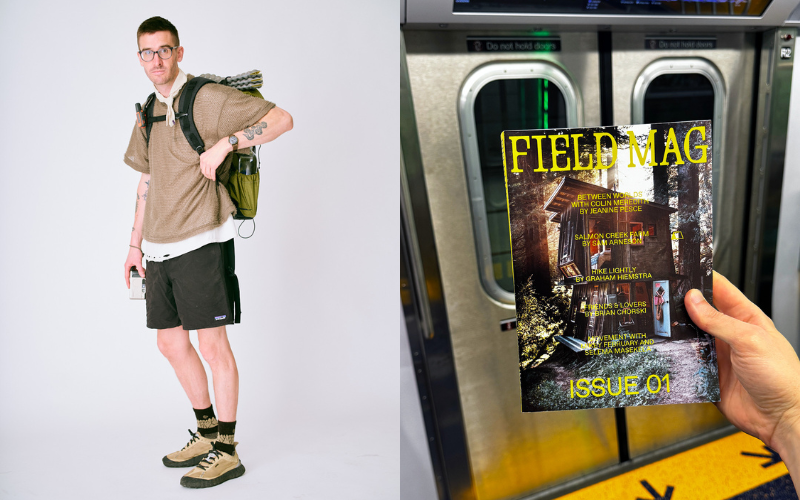Growing up in the Pacific Northwest, Graham Hiemstra was outdoors constantly, running around in jeans and Vans. But even though he was always outside, he jokes that he had never owned a pair of hiking boots until he moved to New York City.
Deconstructing silos and the assumptions about who outdoor consumers and urban dwellers are is part of what fueled Hiemstra, a writer, photographer, and former aspiring pro-snowboarder, to launch outdoor publication Field Mag 10 years ago.
“We try to approach the content from a little bit more of a gentle perspective,” Hiemstra said in an interview with SESO. “We’re trying to encourage folks to enjoy the outdoors however they like, and that can be in a park, your backyard, in the middle of a city. It can also be in the Wind River Range in Wyoming, or in a beautiful national park.”
Like many outdoor publications, Field Mag covers everything from gear to grand adventures, producing inspiring, aspirational content with mountaintop imagery.
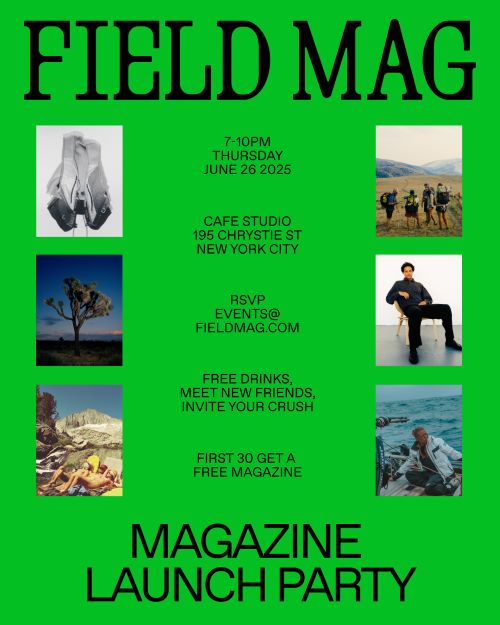
Field Mag’s New York City anniversary party celebrated its first print magazine launch and a refreshed website. Photo courtesy of Field Mag.
“But at the end of the day, I think what we do differently is we acknowledge that that’s not the life that most people are living,” he said. By taking an accessible perspective to the outdoors and associated topics, with authors from diverse backgrounds and an eye for design, Field Mag has grown a loyal community of readers who may live in cities but spend time outside in their free time, or people who just love the Gorpcore aesthetic and want to hear about new brands, look at stunning photography, and read sharp writing.
SESO caught up with Hiemstra in between parties celebrating Field Mag’s anniversary, a refreshed website, and the launch of its first full-scale print magazine. The first was at New York City photography studio Cafe Studio, and still to come is a party on July 10 at Portland, Oregon’s Earth\Studies store. He told us more about how the magazine is reaching a diverse set of consumers, how the growing publication drives revenue, and why Field Mag is launching a print magazine when so many other publications are folding.
What do you think Field Mag as a publication is doing differently that’s propelled its growth?
Field Mag founder and Editor Graham Hiemstra: We’re a resource for and speaking to people that live in cities, that are interested in design and fashion. They love the outdoors to their core but also appreciate culture. While I and many of our readers would love to be out camping and hiking every day or every weekend, the Field Mag universe understands that not everybody is a guide or even aspires to be one.
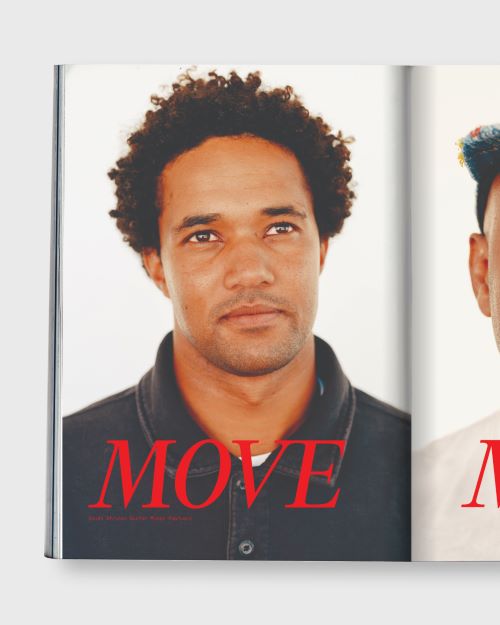
Surfer Mikey February is profiled by Selema Masakela in the first print issue of Field Mag. Photo courtesy of Field Mag.
From the get-go, I have always been driven by two ideas: less is more. Quality over quantity. And then: coexist, not conquer. For so long, the endemic outdoor media was just so focused on the mountain towns and beach towns and Mountain West. Field Mag just tries to take a little bit more of an accessible perspective to outdoors and the associated topics.
I spent a handful of years as a design writer in New York writing about men’s style, architecture, and furniture design and going to Milan every year for design weeks. When I started Field Mag, I thought, “Oh, well, I know about the outdoors. I’ll just show up at Outdoor Retailer.” And it was really funny at the time. There was a lot of headshaking and confusion about why someone living in New York would want to have an outdoor publication. At the time, there was really nobody speaking to people who lived in cities. It took me a number of years to have other marketers and people in the industry wrap their heads around it. The outdoors is so intertwined now with fashion and mainstream culture and cities. You can’t go anywhere without a Chase Bank ad featuring somebody hiking or an Arc’teryx ad in the middle of Times Square.
(When it comes to inclusivity), being in New York, this is such an incredible place where you walk out the door and there’s people of every culture speaking every language. I don’t think it was a conscious decision to have different voices represented in Field Mag and to speak to different people. This is what’s surrounding me.
What made you see the overlap between culture, design, fashion, and outdoor recreation, and that there was an audience for it?
Graham Hiemstra: I spent a lot of my youth thinking that I was going to be a pro snowboarder. I chased that dream and then realized that all my friends were better than me and that I should go back to school before my knees go out. But I’ve always remained close with a lot of people that have stayed in that industry. When I wound up in New York writing about style and architecture, I was keeping an eye on those friends in the outdoor and the snowboard world. There were a lot of professional snowboarders that were also photographers, or they were also artists. I was always more interested in that “artsy” side of the snowboard world than (in) the competing world, so I was aware of these people that were doing interesting things. When I was writing about design and there was a hole in the edit calendar, I was the young editor who had to fill that hole. I’d call up people like Corey Smith, who is an artist and a snowboarder, and do a studio visit around his sculpture.
Culturally around the 2010s into 2014-15, when we launched Field Mag, there was a breaking down of the stratification of the outdoor identity, and people were starting to become more comfortable with defining themselves in not just one way. I’m interested in camping and hiking and backpacking, but I also like to ride bikes, and I also like to dress smart, and I also like to have nice furniture, and I find inspiration in art. I felt like there was no way that I could be the only one feeling that way.
The outdoor industry hears a lot about this growing casual consumer segment, and it creates a lot of discussion around whether brands should focus less on their core consumer and be more accessible to these entry-level people. What is the industry doing well and what could they be doing differently to reach these consumers?
Graham Hiemstra: A great analog of that is the exploration of what’s happening with women’s apparel in the outdoor industry. For many years, the shrink ‘n’ pink was the cursed approach that many brands took, and then they realized that that’s ridiculous, and they hired more female designers, and they realized that women also wear black. There’s still a long way to go, but in the last handful of years, there’s so much rad women’s apparel and gear. Hikerkind and brands like that are really proving how tired those perspectives are.
I think we’re going to see a similar approach taken to the “beginner” customer of the outdoors, where just because you’re new to hiking doesn’t mean that you need kooky hiking gear with funny prints. You can feel serious without having the experience. The hardcore gear doesn’t need to look hardcore, and the basic gear doesn’t need to look basic.
What brands are doing a particularly good job at reaching those consumers?
Graham Hiemstra: Mountain Hardwear is navigating the space better than any major brand. And I’m not just saying that because Field Mag contributors shot their recent brand campaigns and they’re supporters of Field Mag – but full disclosure. But truthfully, Mountain Hardwear is working with interesting photographers, young creatives, small design agencies, and is presenting products in a way that shows people doing high-performance activities, having fun, and doing it with style.
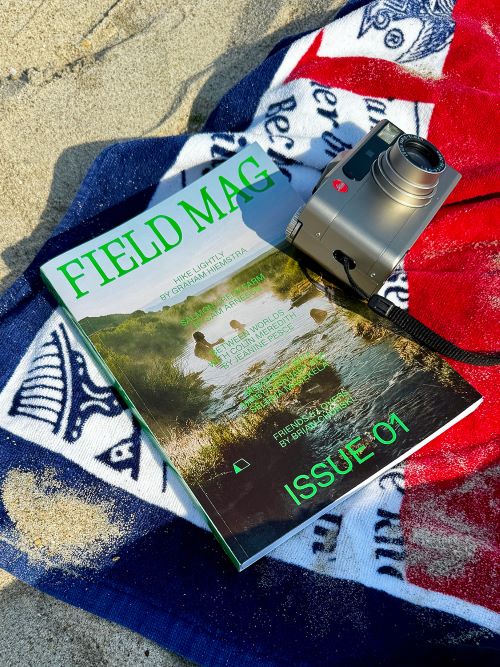
Brian Chorski, who shoots marketing content for Mountain Hardwear and REI, shot the image appearing on one of four different covers for Field Mag’s first print issue. Photo courtesy of Field Mag.
Cottage industry brands at places like Garage Grown Gear are really interesting. Senchi in Portland, Oregon, started making Polartec Alpha pullovers during COVID, selling them on Reddit, and now they have periodic drops that sell out in moments. I’m very curious to see what continues to happen with some of the major brands, like The North Face. I recently went to a showroom, and they’re introducing updated perspectives on their super high-end Summit series, and it looks really good.
What have been some of Field Mag’s most memorable stories when you reflect on the last 10 years?
Graham Hiemstra: One that I really love is James Barkman, who’s an amazing photographer and one of the original van life guys. He did a story about climbing this mountain in Alaska called Mount Huntington, and we actually ended up selecting an image for the (new print) magazine of a tent just pitched basically on a three-foot ledge at thousands of feet.
I’ve really enjoyed being able to introduce brands that I’m a fan of, whether they’re from other countries or they’re just small operations. Allmansright call themselves an ultralight gear lab based in the Bronx here in New York, founded by a husband-and-wife team. The husband was born and raised in the Dominican Republic, and moved to New York City when he was, I think, a teenager. His wife is Swedish and Filipina, grew up in Sweden, and immigrated to New York. They’re just interesting people that found ultralight backpacking somehow and decided to start a brand. It’s stories like that that I think are the classic Yvon Chouinard story but updated for 2020.
It’s so rare to hear that a publication is growing. How do you generate revenue?
Graham Hiemstra: The introduction of AI overviews and algorithm updates with search have impacted our revenue. Three years ago, 50% of our revenue was affiliate, and now it’s probably 25%. But at the same time, we have grown our direct partnerships. Also, in the last year we have been involved with more production and behind-the-scenes work.
The new website has a section that will be about the Field Mag Studio. For all the years that we’ve been doing Field Mag, we’ve always done custom content for ad partners. We’ve always created content for brands to live on Field Mag properties, but in recent years, we’ve been exploring more ways to create content not just to live on Field Mag properties, but also to live on brand properties or partners, or even exclusively for brands’ partners and their platforms. We have built this incredible community of photographers, writers, videographers, artists, and just all-around creatives. Brian Chorski, who shot one of the covers for the magazine, he’s shooting campaign work for REI, for Mountain Hardwear, all these major brands. Now we’re trying to explore further how we can bring all of the community together and all benefit.
Last year I – with Field Mag contributors – creative-directed, cast, and produced a campaign for The North Face Japan. All that imagery is now live in-store across Asia for all North Face stores, as well as on their Instagram. That is an example of the farthest end of capabilities of the Field Mag Studio. None of that lives on Field Mag, it was exclusively created as a production studio. And then on the other hand, we’re still working in conventional, more traditional ways with brand partners around banner ads and straightforward advertising of that nature.
What’s the strategy with the print magazine?
Graham Hiemstra: Some of the more well-known outdoor publications, I would describe them as the band that is playing the arena, but maybe they’re out front handing out tickets to people walking by. Field Mag is a band that is selling out the local venue and is selling out of merch. Our audience is smaller, but every single person that’s at the show wants to be there and has been looking forward to it, and they want to tell their friends. Printing a few thousand magazines and having those in very specific places is not reaching everybody but for the people that it is reaching, it’s making an impact. While we continue to be bombarded with technology and screens and 24-hour availability, I want to be able to provide people with a moment of inspiration or a moment of disconnection from that hyperactive world. A love of analog in general has always been at the core of Field Mag, with film photography and with our design. We’ve done some print photo zines in the past, so this isn’t exactly the first print issue that we’ve done. It is the first of this size and caliber.
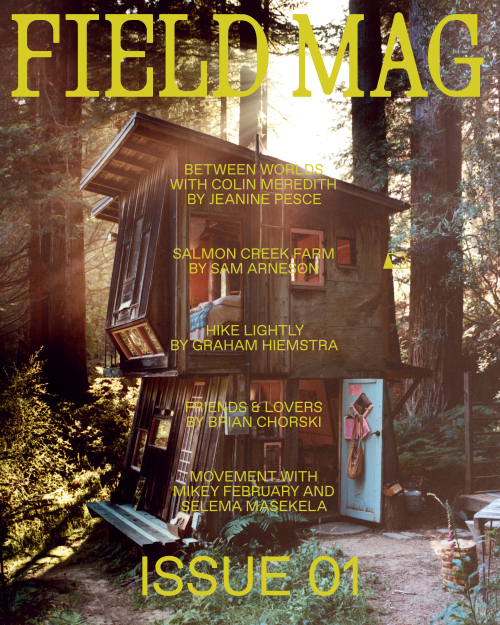
Another one of the four Field Mag print issue covers features Salmon Creek Farm on California’s Mendocino Coast. Cover image by Chad Unger. Photo courtesy of Field Mag.
That’s the business answer. But the other answer is just: we don’t have investors. I’m the boss, and I wanted to make it.
We have it available at fieldmag.com/shop and we’re building our stockist network, so we will be in many specialist outdoor shops and magazine boutiques around the country and in Europe as well. We’ve got about 10 shops that we’re shipping magazines to right now, and hopefully that will continue to grow. One component of the magazine that I’m really excited about and happy with the way it turned out is we have a kind of a Yellow Pages section which we’re calling the core outdoor store directory. The majority of shops in it have no idea this exists, but for the past six years we’ve had an internal document among Field Mag contributors of a growing list of all the core outdoor stores in America. This is that in print.
I think Issue 02 will come out around February of next year. We have some irons in the fire already, but at the end of the day, I wanted to go to the beach this summer. And we want to give it time to breathe. It’s really meant to be a beautiful book that can be enjoyed year-round. And I want to go surf.
I’m amazed you have time to go surfing this summer with everything you’re juggling.
Graham Hiemstra: Well, over 10 years I’ve figured out some sort of flow, and that often means just being at a computer for 15 hours in row. But I could be at the beach in an hour off public transportation from the middle of Manhattan. I went surfing three days ago. It was very mediocre, and I had a great time.
Kate Robertson can be reached at kate@shop-eat-surf-outdoor.com.

